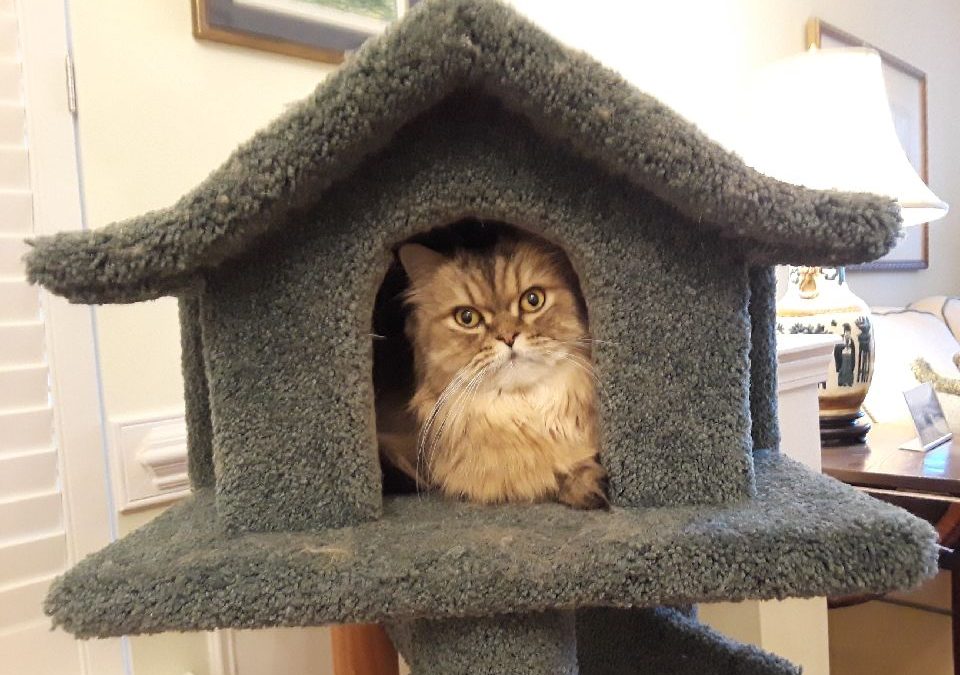Follow these five tips to help keep your pet safe at home.
Not many pet owners have the luxury of being able to keep their pets under watch all the time. There are a number of steps that pet owners can take to help ensure pets are safe around the home when pet owners are not there.
1: One person’s trash – Dogs and cats alike seem to love the smell, taste and texture of trash, and they will go out of their way to play in that arena while you’re away. The problem is many things in our trash that may seem benign to us can be dangerous to pets, including chicken bones, which are choking hazards because of their brittle nature. Take all the trash outside when you leave for any length of time, or place trashcans out of pet’s reach.
2: Do sweat the small stuff – Remove small toys, string and other choking hazards such as rubber bands from your pet’s area in your home. They may love these things as toys, but the risk of choking is high. Consider, too, if your pet’s toys are sized appropriately for him. A ball meant for a smaller animal can lodge within a larger one’s throat.
3: Eight lives and counting – Cats aren’t always as nimble footed and self sufficient as legend has it. Check for places where they can become stuck, such as behind the refrigerator or in fireplace openings, and seal up those openings. Close all toilet lids before you leave the house. Finally, put away those toys you may enjoy with your feline friend that include strings. Left alone with one, your animal can quickly choke.
4: An idle mind is the devil’s workshop – Pets enjoy their routines. And if you’re going to be away for an extended period of time, or if you’re going to be away at times of the day when you’re usually at home with your pet, consider hiring a professional pet sitter to help your pet stick to its schedule. It is reassuring to the pet, and can help alleviate some of the mischievous exploring that often leads to disaster. A good pet sitter knows how to think like a pet and can quickly scan your pet’s environment for known dangers. Before hiring a sitter for your pet, make sure the pet sitter is bonded and carries adequate liability insurance. Finding a pet sitter who is accredited through a national association like PSI is also a real plus. Be sure to make time for a face-to-face interview in your home with the sitter and your pets. Conducting an initial interview is an excellent time for you to check credentials and ask important questions.
5: Disaster and emergency planning can save the day – All pet owners should have a disaster plan and kit for each of their pets. Natural disasters such as hurricanes and floods, as well as unforeseen man-made disasters like chemical spills, can close off a residential area in short order. The key is to be prepared as best as you can and it only takes a small amount of preparation.
You should be able to pass the “five minute preparedness test,” meaning in five minutes or fewer, you should be able to get your pets and their emergency kit out of your home.
A Pet Disaster Kit Should Include:
• A copy of your Emergency Disaster Plan
• Pet first-aid kit and book
• Road maps and street guides
• Photocopies of medical records
• Recent photos of your pets
• Pet medication
• A separate carrier for each pet
• Pet feeding dishes
• Pet food – Be sure canned food has a pop-top
• Bottled water – a week supply for each pet
• Extra leashes, collars and harnesses
• Dog stake or cables
• Muzzles
• Gloves – heavy gloves and disposable rubber gloves
• Small or disposable litter boxes
• Kitty litter – scoopable is most convenient
• Disposable garbage bags
• Paper towels
• Liquid soap, disinfectant and bleach
• Blankets and towels
• Flashlight
• Portable radio
• Extra batteries
• Scissors
• Pocket knife
• Pillowcase or Evac Sack
• Pet toys
• Pet treats


